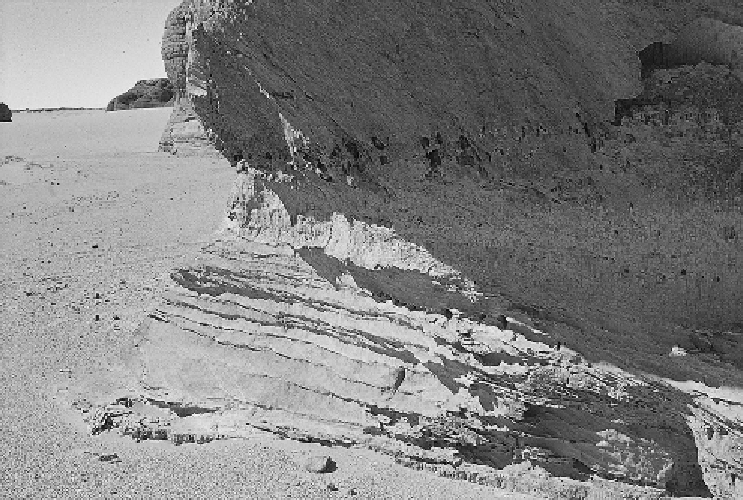Geoscience Reference
In-Depth Information
Figure 9.2. Isolated sandstone hillock undercut by wind erosion near In Guezzam,
central Sahara. (Photo: J.D. Clark.)
as the Tian Shan north of the Tarim Basin in western China, the Andes west of the
Patagonian Steppes, the Sierra Nevada and the Rockies flanking the deserts of the
south-western United States and the Atlas Mountains north-west of the Sahara. Others
are dotted with uplands that were themselves prone to glacial and periglacial activity,
such as the Hoggar Mountains in the north-central Sahara.
There is no good reason why angular silt-sized particles cannot be produced within
deserts by a variety of physical and chemical weathering processes, including glacial
grinding and frost shattering in desert mountains, salt weathering (Goudie et al.,
1979
),
chemical weathering of the bedrock (McTainsh,
1987
) and abrasion during turbulent
sand storms (Amit et al.,
2009
). In addition, as Darwin observed correctly in 1832,
some of the silt-sized particles could be the siliceous frustules of diatoms that lived
in the early to mid-Holocene freshwater lakes that once flourished across the Sahara.
Furthermore, there is no particular reason why the dust deposited in any one locality
cannot have come from several different sources. Another complicating factor is the
remobilisation of dust mantles laid down along the path of the dust plume (McTainsh,
1987
).
In the Negev Desert of Israel, the loess often consists of a relatively coarse quartz
fraction (50-60
m) with OSL ages dating back to about 180 ka, in a matrix of much
finer particles (3-8
μ
μ
m) (Crouvi et al.,
2008
; Crouvi et al.,
2009
). The finer material is

